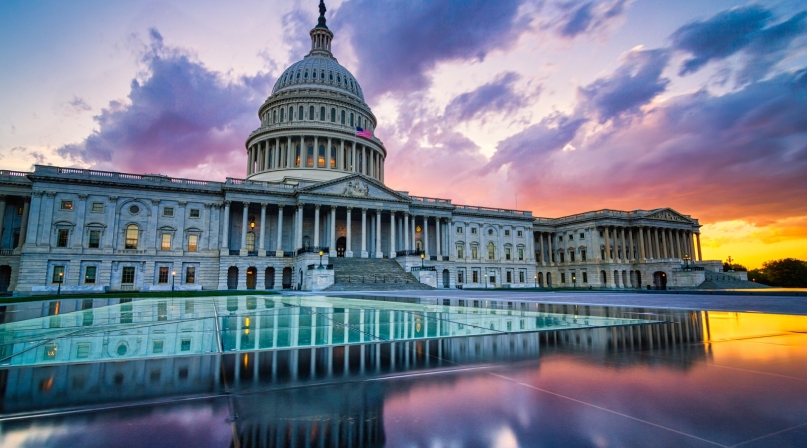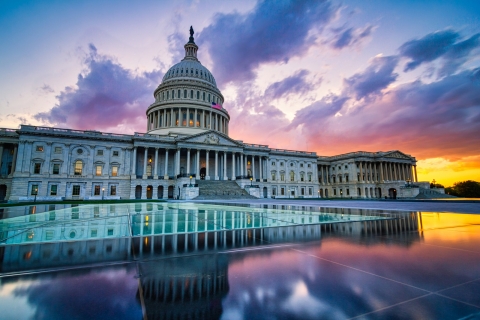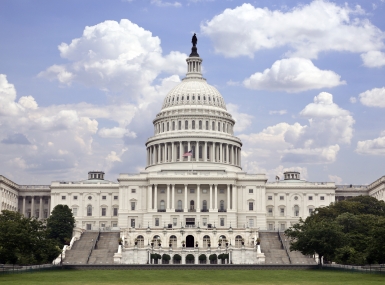House passes COVID relief with direct county funding
Author
Upcoming Events
Related News

Key Takeaways
The U.S. House of Representatives passed the $1.9 trillion American Rescue Plan Act of 2021 Feb. 27 on a 219-212 vote. It includes $65.1 billion in direct aid to counties to respond to the COVID-19 pandemic, part of the $350 billion in total aid to state and local governments.
The bill will go straight to the Senate floor, where the budget reconciliation process allows the Senate to bypass the filibuster and pass legislation with a 50-vote threshold if it meets a series of budgetary requirements. The House must then pass the updated legislation before sending it to the President’s desk, which the majority in both houses aim to do by March 14, when existing unemployment insurance provisions will expire.
Learn More
Read NACo's analysis of the American Rescue Plan Act of 2021
“Local government aid outlined in the American Rescue Plan offers a surefire way to advance our shared national goals of ending this pandemic and rebuilding our local economy,” said NACo President Gary Moore, judge/executive of Boone County. Ky., ahead of the bill’s passage.
The American Rescue Plan would allocate funding to all counties. The CARES Act only provided direct funding to counties with 500,000 residents or more.
In addition to the direct funding for counties, the American Rescue Plan Act includes hundreds of billions of dollars for public health and vaccines, assistance for vulnerable populations, education and housing stabilization and more.
“This bill recognizes counties’ vast responsibilities to care for our most vulnerable residents — our sick, unemployed, elderly and youth,” said NACo Executive Director Matt Chase. “Counties face a constant struggle to secure the resources necessary to serve our residents and support our frontline heroes fighting the pandemic. After a year of this crisis, far too many counties have received no or very limited, direct fiscal relief.
“Our costs have skyrocketed, we have dug into our reserves and made difficult decisions to reduce our workforce,” he noted. “While we have experienced record demand for essential services, we have shed jobs at rates far outpacing the rest of the economy. Responsible investments from our federal partners would better equip counties to help end the COVID-19 pandemic and drive economic recovery. Every dollar of local government aid amounts to at least a dollar increase in GDP growth.”
In addition to the direct funding for counties, several other provisions of the bill would support local efforts to control the pandemic and other county efforts related to the pandemic. They include:
-
$7.5 billion for the Centers for Disease Control and Prevention to support state, local, tribal and public health departments and community health centers in the distribution of vaccines through information technology and data enhancements, facility enhancements and public communications.
-
$46 billion to the Department of Health and Human Services to support state and local health departments’ distribution and administration of tests, PPE and other supplies, expand contact tracing capabilities and sustain the nation’s public health workforce.
-
$3.5 billion for the Substance Abuse Prevention and Treatment block grant
-
$250 million to establish “strike teams” to respond to outbreaks in skilled nursing facilities
-
$1 billion to the Temporary Assistance for Needy Families program for temporary cash assistance
-
$26 billion for emergency rental assistance, including competitive grants for county governments with populations over 200,000
-
An extension for the recently enacted 15 percent Supplemental Nutrition Assistance Program benefit increase through Sept. 30, 2021 from the current June 30 expiration
-
An extension for federal unemployment benefits through August 29, 2021 and a benefit increase to $400 from $300 beginning March 14, 2021
-
An extension for the Families First Coronavirus Response Act emergency paid leave program through Sept. 30, 2021, providing up to 12 weeks of paid sick and family medical leave related to the COVID-19 pandemic and a provision making county employers eligible for a corresponding payroll tax credit.
-
$1.4 billion in emergency Older Americans Act program funding
-
$130 billion in emergency funds to support K-12 schools in safely reopening, including addressing learning loss
-
$7.25 billion for the Paycheck Protection Program and $15 billion for the Economic Injury Disaster Loan Advance program for small businesses
-
$30.46 billion available through FY 2024 for public transit
-
$50 billion for FEMA’s Disaster Relief Fund.

Attachments
Related News

U.S. Congress passes reconciliation bill: What it means for counties
On July 3, the U.S. Congress passed sweeping budget reconciliation legislation.

County officials voice concern for SNAP, Medicaid amid reconciliation vote
Ahead of the Senate and House's budget reconcilliation votes, county officials from five states traveled to Capitol Hill June 24, to advocate against its provisions related to the social safety net programs.

U.S. Senate passes amended reconciliation bill text: What it means for counties
On July 1, the U.S. Senate narrowly passed their version of sweeping budget reconciliation legislation.
